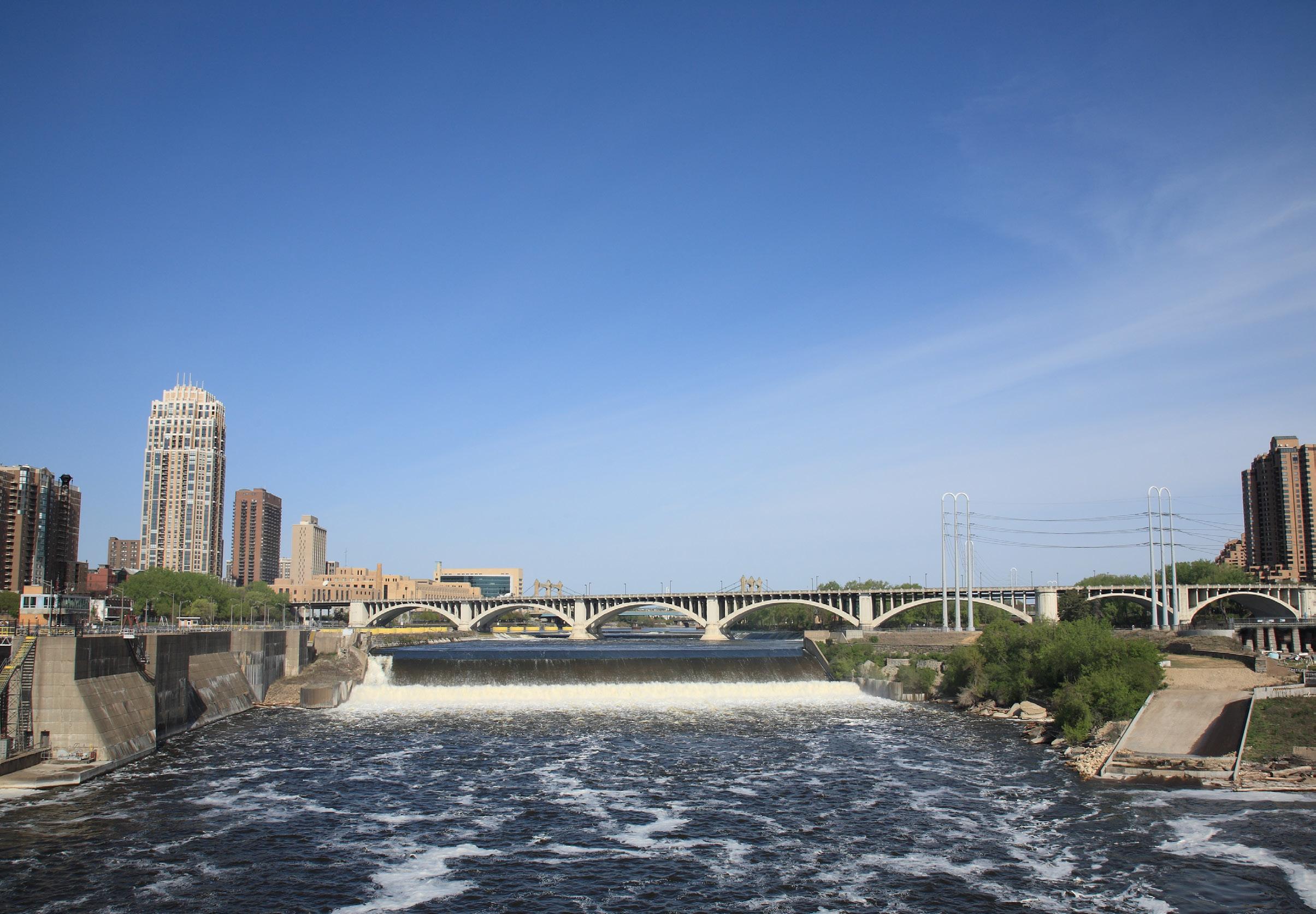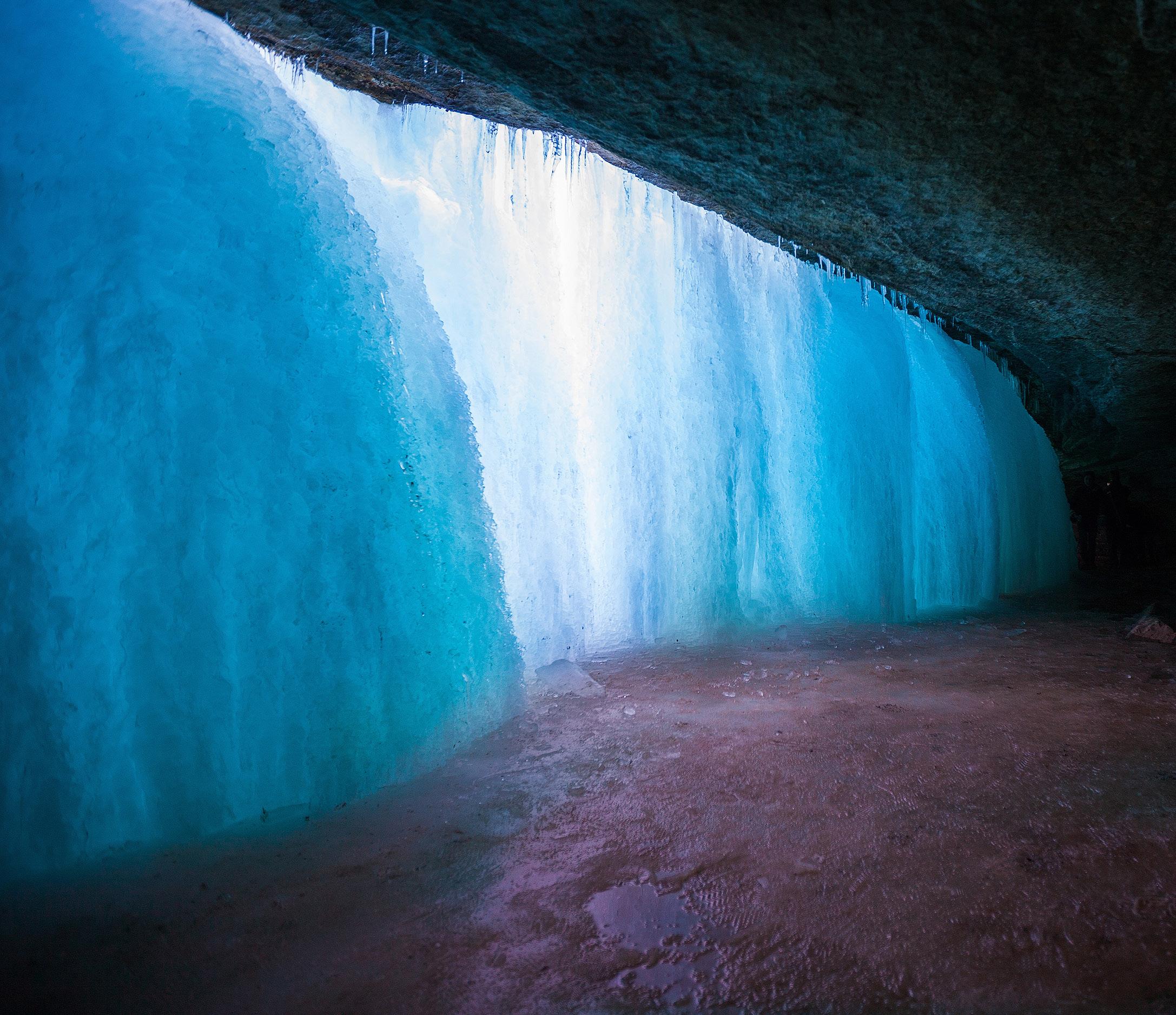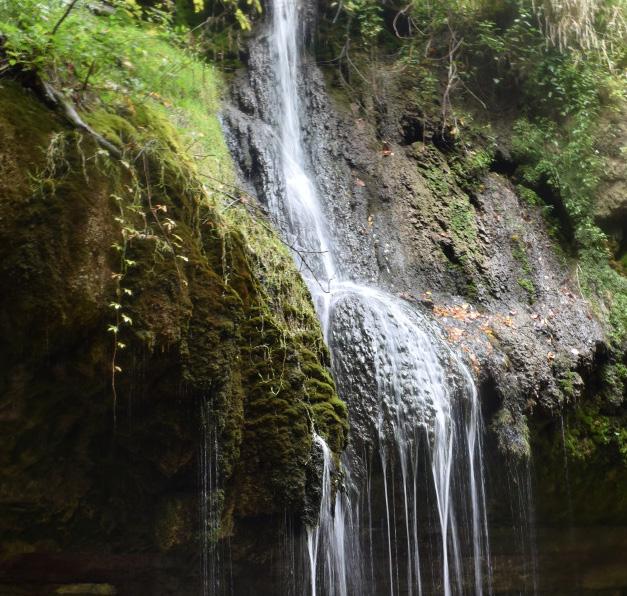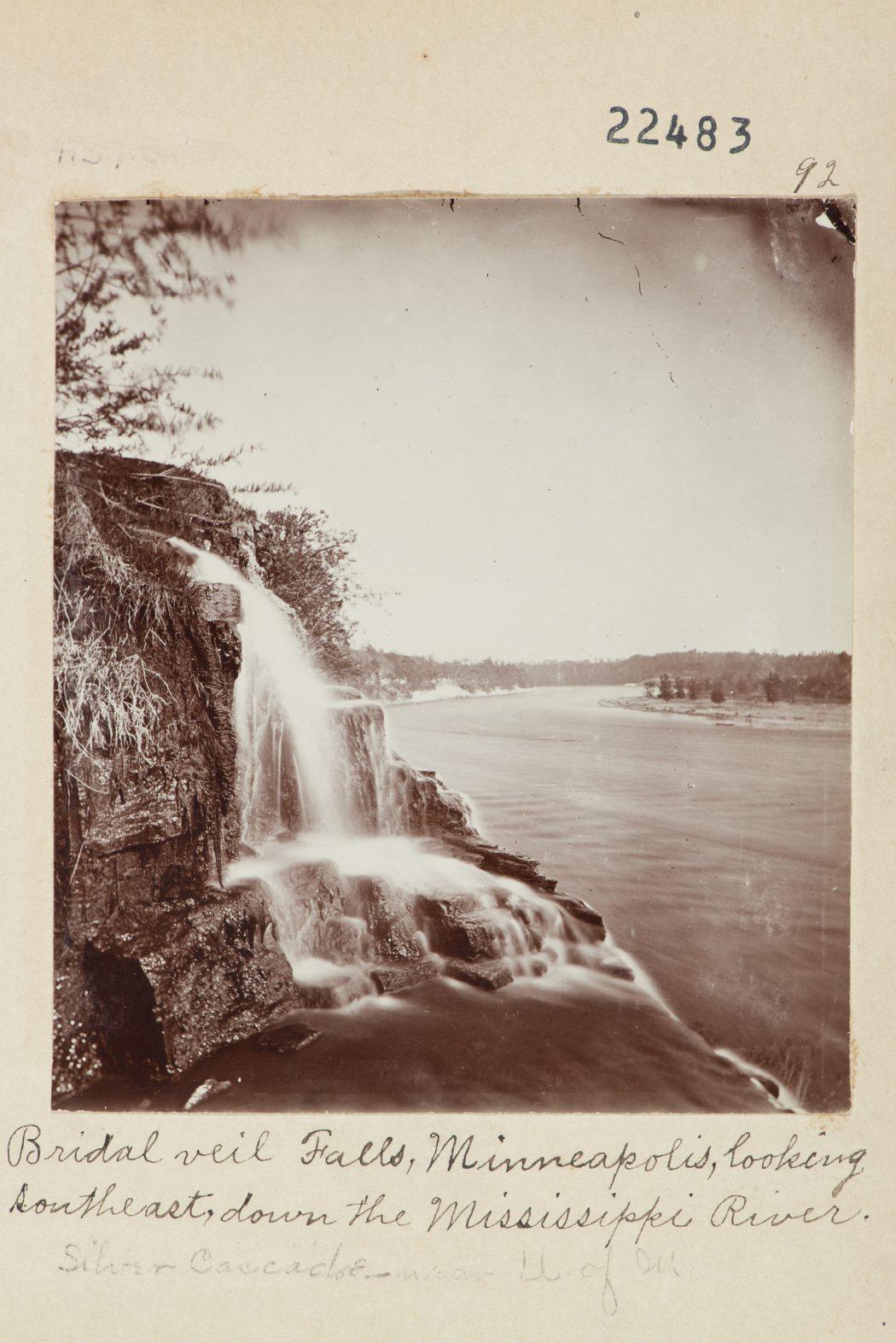
4 minute read
City Falls
by TRACY MUMFORD
Minnesota is flatter than the vowels in a Coen Brothers movie. The state’s highest point calls itself a mountain and well, we can let it think that. Now, we’re not the flattest pancake at the diner: Florida, Illinois, North Dakota and Louisiana take the top spots, but Minnesota rounds things out at number five.
I bring this up not to evoke mountain envy or deter future ski resorts, but because flatness can put a real damper on one of the most awe-inspiring natural features: the waterfall. Waterfalls are the life of the party, always jumping off the roof straight into the pool. Who doesn’t want to watch water roar off a cliff’s edge and plunge down in a mesmerizing mist?
I come from a state with so many waterfalls, they just started naming them Susan and Martin and Annie. And while Minnesota admittedly has fewer vertical water features than my home state, it does have some gems: the North Shore delivers, as do some scattered state parks. But in my tours of Minnesota’s waterfalls, some of the ones I’ve come to love most are within city limits. Some are calendar-worthy; others would only go into a calendar of “So That’s a Waterfall, Huh.” I love them anyway.
We all know Saint Anthony Falls—at least, the manmade version of it. What was once a natural waterfall in downtown Minneapolis has been harnessed for more than a hundred years, first to power flour mills and now to power iPhones. The original sandstone structure is now an industrial-chic concrete, thanks to an illfated plan to tunnel underneath the Mississippi
in the 1860s. (The failed tunnel created a whirlpool that almost entirely consumed the falls—whoops— and the Army Corps of Engineers had to step in to save it.) My favorite encounter with the falls came when the Corps lowered the levels of the Mississippi for maintenance, and walked on the riverbottom. I saw the footprint of old, historic structures, yes -- but also a muddy fleet of grocery carts and longstranded Lime scooters.

Minnehaha Falls
Minnehaha Falls definitely goes in the calendar. You know it, you love it, you’ve eaten a fish taco near it. This 53-foot tall gem anchors one of Minneapolis’ oldest parks. It’s stunning in any season, but seeing it frozen from top to bottom is always a nice postcard from the Ice Age. In warmer weather, a brave kayaker even went over the falls because...GoPro or go home? Please note: that plunge is not illegal, but you should get a permit.
The first time I went to the appropriately named Hidden Falls, I could not find the falls. Whether that’s a signage issue or my own personal lack of direction, hard to say. The St. Paul park is large; the falls are small. On a second trip, a large graffitied stone declaring “Hidden Falls” confirmed to me that I was in the right spot. Fed by a small spring, the water trickles into a shallow pool. Though the park sits right on the river with a busy boat launch and sprawling picnic area, the falls, true to their name, are tucked back where you can forget the rest of the world exists. I think that’s part of waterfalls’ charm: you get to watch nature in wild motion, like waves or wind gusts.

Hidden Falls
Shadow Falls is a noir title waiting for its plot. It also happens to be a St. Paul park that often feels forgotten. You can start where Summit Avenue runs into the river path, and hike down into the wooded enclave. Follow the creek, cross a handful of makeshift bridges built of 2x4s, and come upon the waterfall spilling its secrets into the Mississippi River.
In the winter, ice climbers scale the frozen water wall; the sight is worth the snowy hike. The last waterfall I’ll mention also happens to be the dinkiest and my favorite: Bridal Veil Falls. This is the “little engine that could” of waterfalls. There was a time, I know from archive photography, that this majestic fount of water resembled its namesake: a long delicate spray of water hurtling down from the rocks. If it were to be named now, possibilities include The Trickle, Grandma’s Spittle or maybe Moist Spritz. The creek that feeds the falls is almost entirely underground, and while the volume of water is not high, it’s there and continues to flow.

Shadow Falls
To see Bridal Veil from the top, you can peer over the railing along the East River Parkway, just north of the Franklin Bridge in Minneapolis. To see it from below, take the long staircase—which starts south of the bridge—down to the riverbank. That’s my preferred view: looking up at the eternally graffitied waterfall, still there after everything, dropping straight down to join the Mississippi.

Bridal Veil Falls
The names used here come from municipal maps, but may not reflect the names given to these features by people native to the area. These waterfalls are located on Dakota lands.







